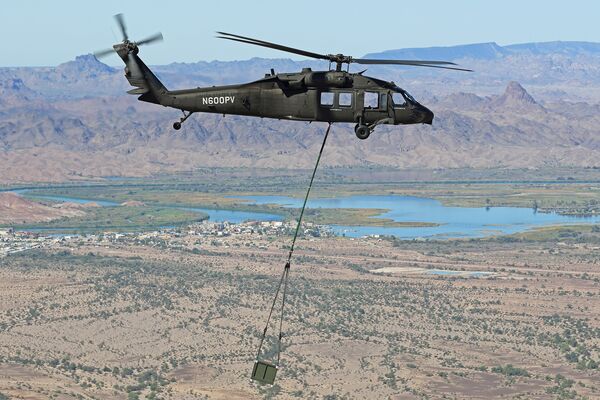
The optionally piloted vehicle (OPV) Blackhawk N600PV at Yuma Proving Ground, Arizona, on 14 October 2022, during PC22 Technology Gateway. (Sikorsky/Lockheed Martin)
Programme officials at the Defense Advanced Research Projects Agency (DARPA), along with their counterparts at Lockheed Martin-owned Sikorsky, are planning to expand a DARPA-led programme for autonomous US Army rotorcraft into US Navy-operated aircraft.
Igor Cherepinsky, director of Sikorsky Innovations, told reporters that company representatives were in talks with navy leaders to include the sea service's CH-53K King Stallion into the agency's Aircrew Labor In-cockpit Automation System (ALIAS) project.
“We are actively talking with the navy, along with our [other] customers” about transitioning the artificial intelligence (AI) and autonomous flight technology from ALIAS into other rotorcraft platforms, specifically the CH-53K, he said during a 2 November briefing on the DARPA programme.
He declined to provide details on the company's continuing talks with navy leaders on how the ALIAS project, focused on autonomous flight capabilities for a UH-60 Black Hawk, could be transitioned to the sea service's premier heavy-lift cargo helicopter.
However, he did characterise the initial feedback from navy officials as “quite interested” in terms of participating in the ALIAS project. Both the Black Hawk and Sea Stallion are built by Sikorsky. Cherepinsky's comments came in the wake of a successful live-flight of an ALIAS-equipped Black Hawk helicopter, conducted during the army's annual Project Convergence 2022 (PC22) Technology Gateway experiment event.
The DARPA and Lockheed Martin/Sikorsky team conducted three separate autonomous flights in October with the ALIAS system aboard the Black Hawk. The flights took place during the inaugural PC22 Technology Gateway experiment event at Yuma Proving Ground in Arizona.
Looking to read the full article?
Gain unlimited access to Janes news and more...







